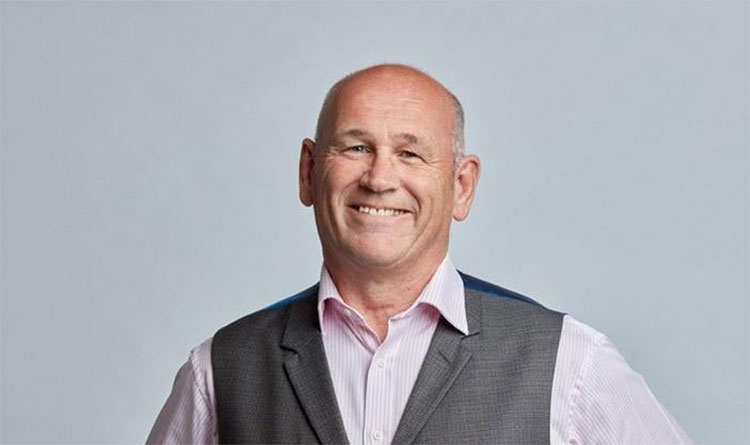Leading Out of Lockdown: The Seven Traits of Leaders Who Are Fit for the Challenges of the Future

One year into the COVID crisis, it’s time to take a breath. What have we learned about leadership as we struggled to tame the pandemic? What will we change because of what we’ve all been through?
COVID-19 has brought society to a crossroads. We can choose one path or another. We can slink back to the way we were, making a change or two in the name of progress. Or we can confront what the pandemic has told us: the way we do business and the way we run society is not fit for the future.
Alison Martin is the EMEA CEO for Zurich Insurance Group. She sums it up like this: “What is the world we want to aspire for our children to live in? Can we try and build that one rather than the one we’ve been destroying?”
General Stan McChrystal ran the joint operations for the allied forces in Iraq and Afghanistan and commanded the mission to capture Saddam Hussein. He now advises leaders on coping with crises. He observes: “There are a few organizations that sadly have leaders who are waiting to snap back in muscle memory and get back to the way it was. That’s a false idea. There is no going back because your competition is going to a better place. Anyone who gets caught going back to the rear is going to pay a terrible price.”
Osvald Bjelland, the CEO of Xynteo, who works with many of the world’s best-known brands, notes: “We have a very profound leadership deficit, which spans both government and business. At its best, leadership is about uniting people to collaborate on building towards a shared future. There is a glorious opportunity here for genuine leaders to pull people and organizations together, in the right direction—to recover better.”
Many leaders believe that COVID-19 has challenged every long-held belief in business. Some say it is time to put humanity back into leadership. The past year had sealed the death of all-powerful, command and control leaders. Life after lockdown requires a new era of compassionate leadership—much heralded in the past, but only adopted with lukewarm enthusiasm. Most agree it is time to find a new way to inspire, motivate and lead.
The urgent need to re-define leadership has propelled us to propose a new model for leading out of lockdown. Our LEADING model is a structure for re-setting attitudes and re-setting society as the vaccines roll out and injections overcome infections.
The L in leading is about looking like a leader. What did the truly effective leader look like in the past 12 months? How can we replicate their mindset, their behavior, their words and their actions? One of the key leadership strengths to emerge in this horrible year has been agility—the ability to swiftly identify and seize opportunities under incredible pressure.
The E in leading stands for empathy, emotional intelligence, and empowerment. These three leadership traits are the DNA of the compassionate leader.
The A in leading is all about awareness. Not only awareness of the environment, the world and your stakeholders but also the highest level of self-awareness of your strengths, your weaknesses and your impact on others.
The D in leading is about delivery. It’s not just about getting products to market. Delivery means getting difficult things done. Do you have the ability to deliver truly remarkable achievements and change in the most challenging of circumstances?
The I in leading is for impact. This is the ability to communicate with clarity, brevity and impact as well as the skills to inspire, motivate and encourage.
The N in leading is for nurturing. This is about nurturing your people to maximize their individual potential. It’s about developing and caring for them in the teeth of the storm.
The G in leading is for game changing. For life after lockdown, we don’t want leaders who deliver incremental change—people who get there in stages. The world of business and wider society needs leaders who have the courage, the vision and the determination to radically change the game.
These seven traits amount to a new kind of leader: one who is fit to meet the challenges of the future.
We owe it to our children and our grandchildren not to go back to the way we were. We owe it to the 120 million who’ve been infected, so far, and the 2.7 million who’ve died. We must use the memory of the experience of COVID-19 to improve our world and to improve the lives of the eight billion people who inhabit this planet. How successful will we be in this endeavor? In the end, as always, it all comes down to leadership.
******
Written by Atholl Duncan. Follow CEOWORLD magazine on Facebook, Twitter, Instagram, and LinkedIn.
Bring the best of the CEOWORLD magazine's global journalism to audiences in the United States and around the world. - Add CEOWORLD magazine to your Google News feed.
Follow CEOWORLD magazine headlines on: Google News, LinkedIn, Twitter, and Facebook.
Copyright 2025 The CEOWORLD magazine. All rights reserved. This material (and any extract from it) must not be copied, redistributed or placed on any website, without CEOWORLD magazine' prior written consent. For media queries, please contact: info@ceoworld.biz








